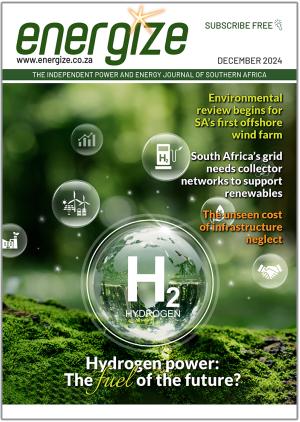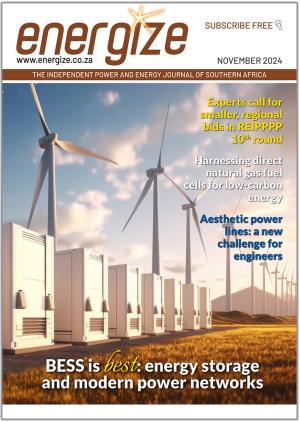Information from SAWEA
South Africa’s renewable energy market continues to evolve whilst growing significantly, demonstrating that the industry is maturing. What we are witnessing is the liberalisation of the energy market, moving towards a mature and sustainable wind sector says the South African Wind Energy Association (SAWEA) as these shifts are underpinned by Government’s push for an accelerated transition to clean energy technologies.

The renewable energy industry has witnessed significant changes this last year, resulting in the market’s transition from being one with a single off-taker (Eskom) to an open model, brought about by the removal of the licencing requirement for generation plants over 100 MW as a liberalisation mechanism promulgated into law by the Department of Mineral Resources and Energy (DMRE). With more renewable energy projects being introduced through this intervention, it will significantly contribute to the reduction of carbon emissions in line with the country’s Nationally Determined Commitments.
“There is a clear indication of a changing energy landscape through policy interventions that promote a green pathway to energy security, which have come about as a result of our country’s need for energy security and commitment to decarbonise.
The private off-taker market model is very different to the public programme and together, these two structures will allow for the procurement of new capacity to meet the need of the country as a whole, and to facilitate the implementation of the targeted energy mix,” said Niveshen Govender, the chief executive officer of SAWEA.
This shift offers flexibility and allows for private entities to accelerate the reduction of their carbon footprint, further attracting new investors to renewable energy. The structure of power purchase agreements (PPAs) for the private offtake market will be viewed differently to the conventional Renewable Energy Independent Power Producer Procurement Programme (REIPPPP) PPA structure.
“Tariffs in the private PPA market will be determined by bilateral negotiations between willing buyers and willing sellers, creating an open market mechanism that will lead to IPPs approaching commercialisation differently,” added Govender. “While there is an argument for the standardisation of PPAs, the allocation of risk remains a concern and will be approached differently, depending on the project conditions.
“Contributing factors to future tariffs could include inflation, the cost of logistics and shipping, global changes to raw material and production costs amongst others. This may lead to an unintended imbalanced market shift between established and new IPPs competing on scale and price,” explained Govender.
To date, the country has procured 3442 MW of wind energy through an established public procurement programme, and a further 984 MW of wind energy from projects which have been registered with the national energy regulator (Nersa) for private procurement. There’s a potential pipeline of at least 4000 MW as bid in Bid Window 6 for public procurement and 15 000 MW as indicated by the DMRE for private procurement. When considering South Africa’s long term energy planning, both private and public markets are required to significantly increase the penetration of renewable energy towards a sustainable energy transition.















